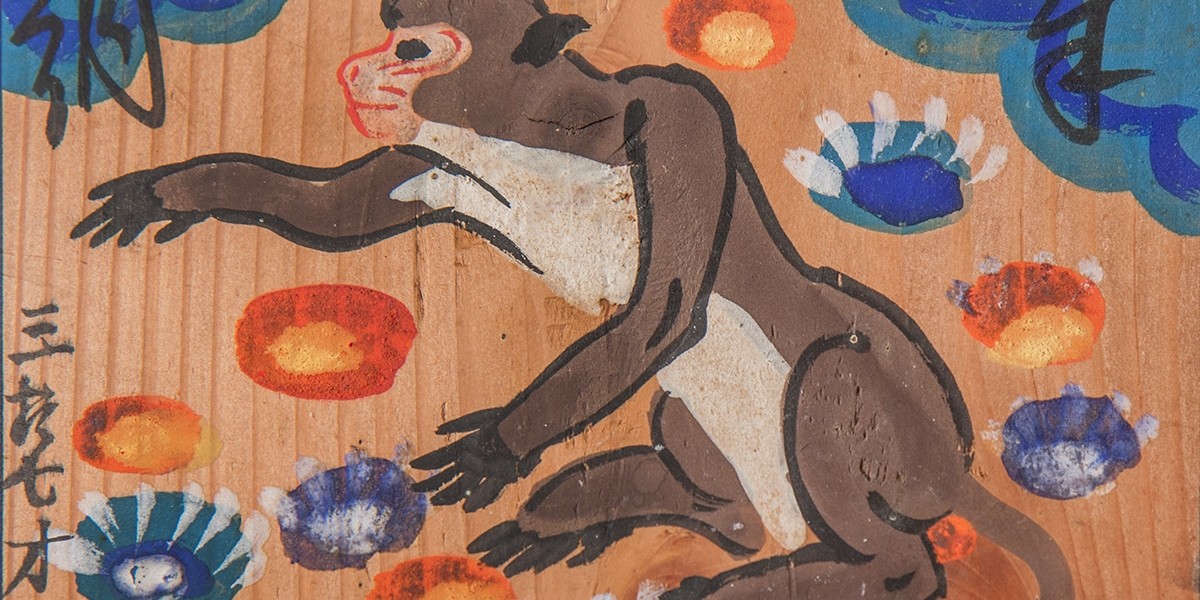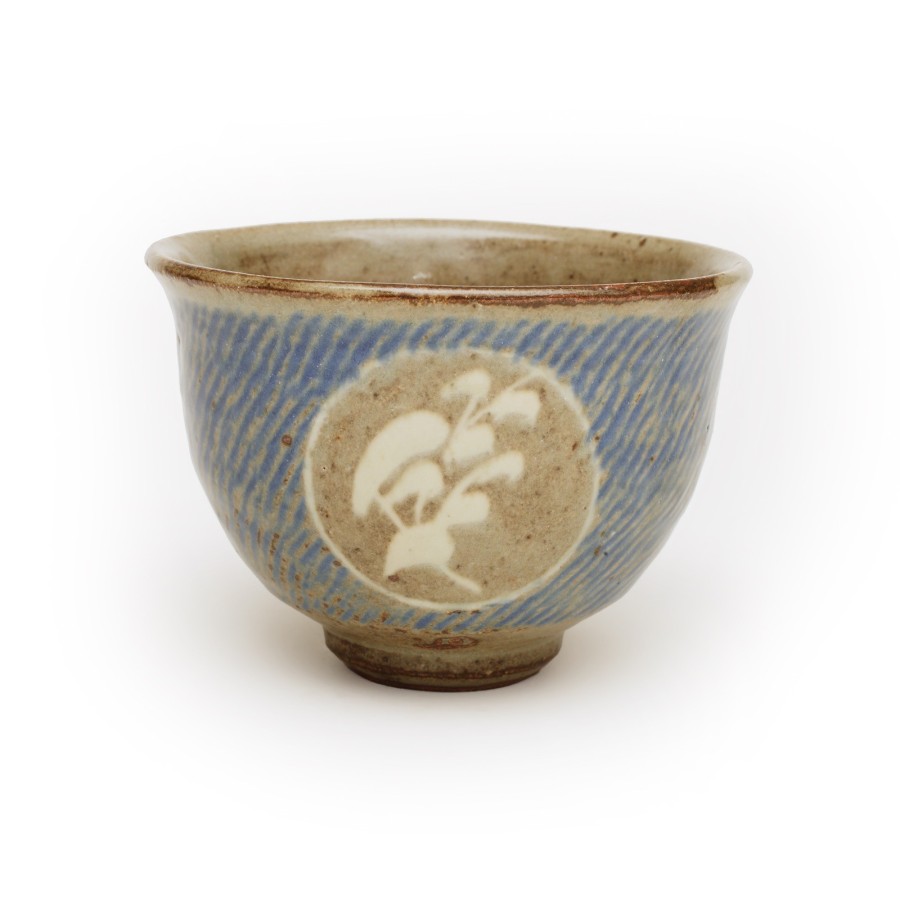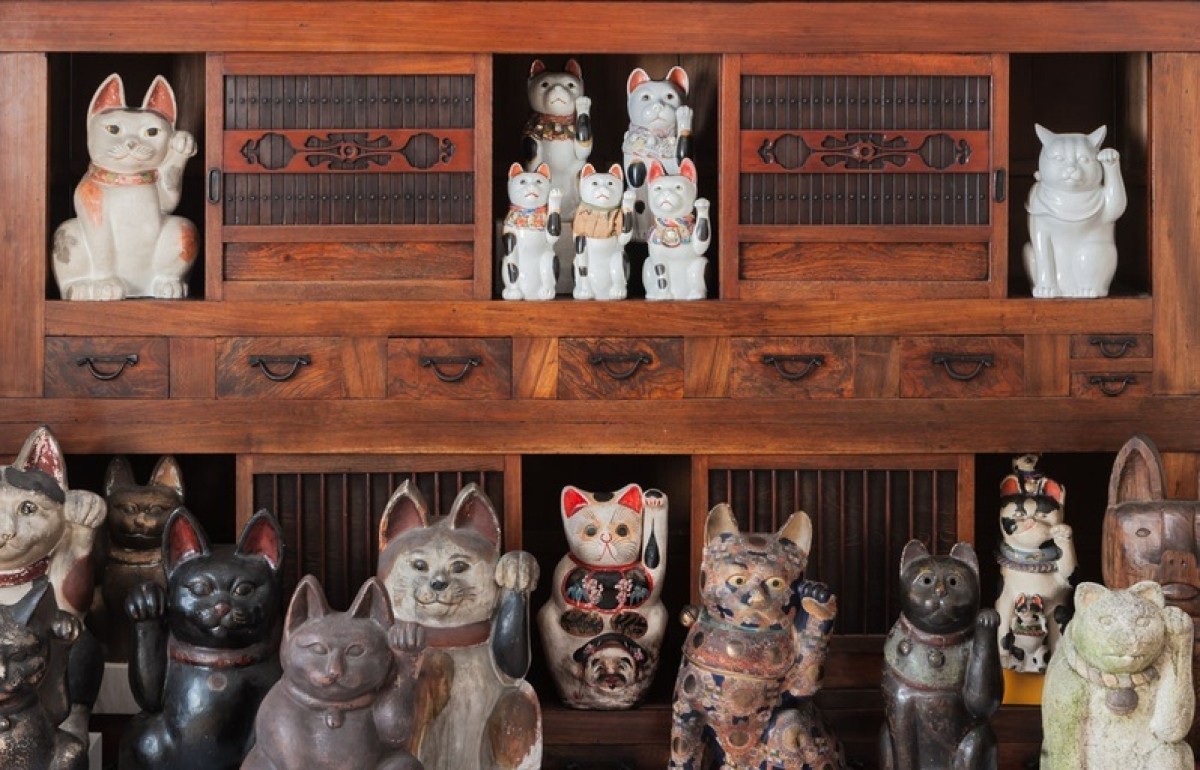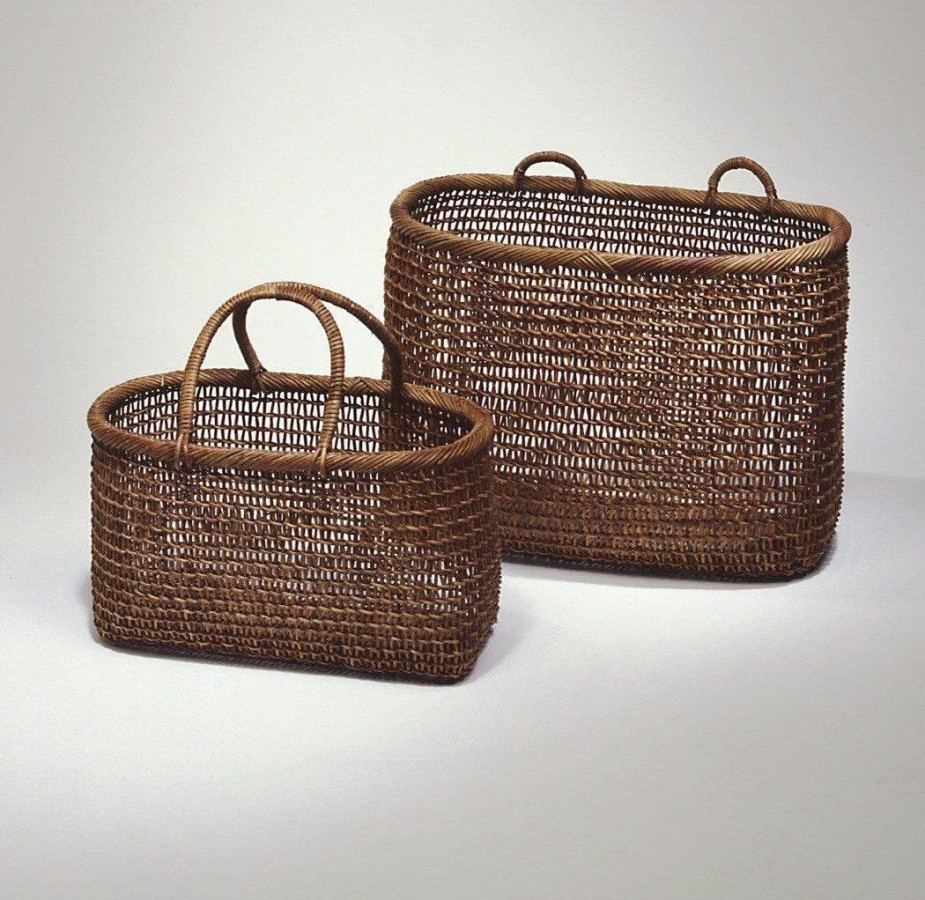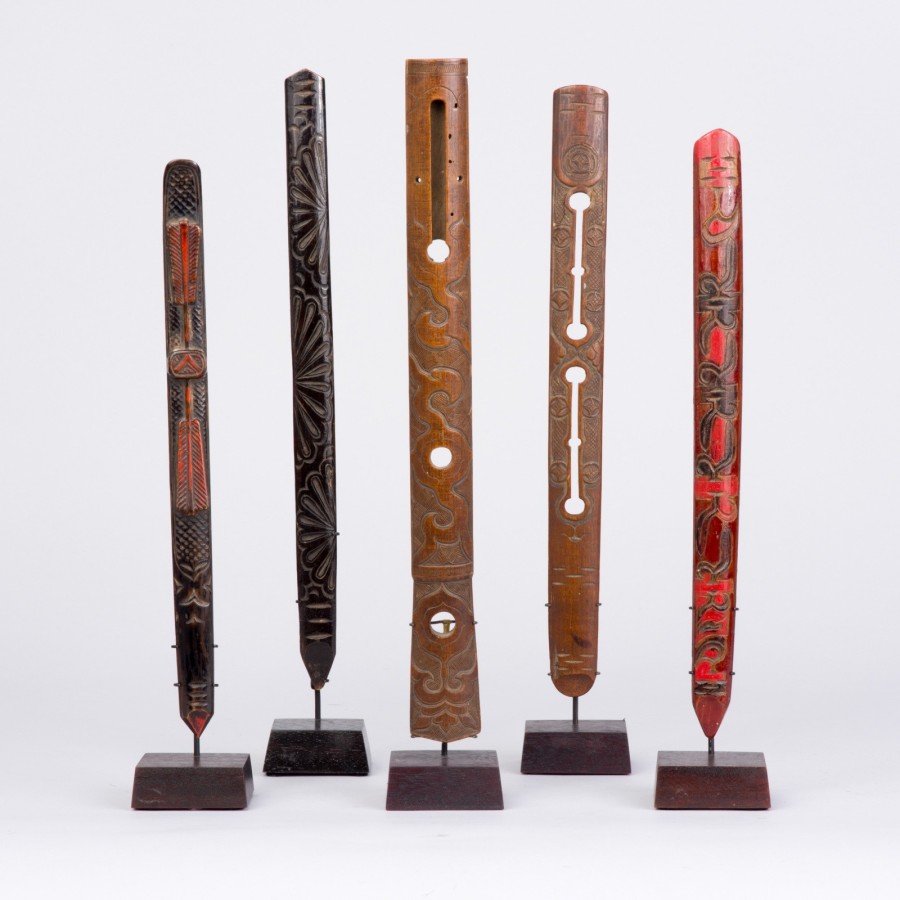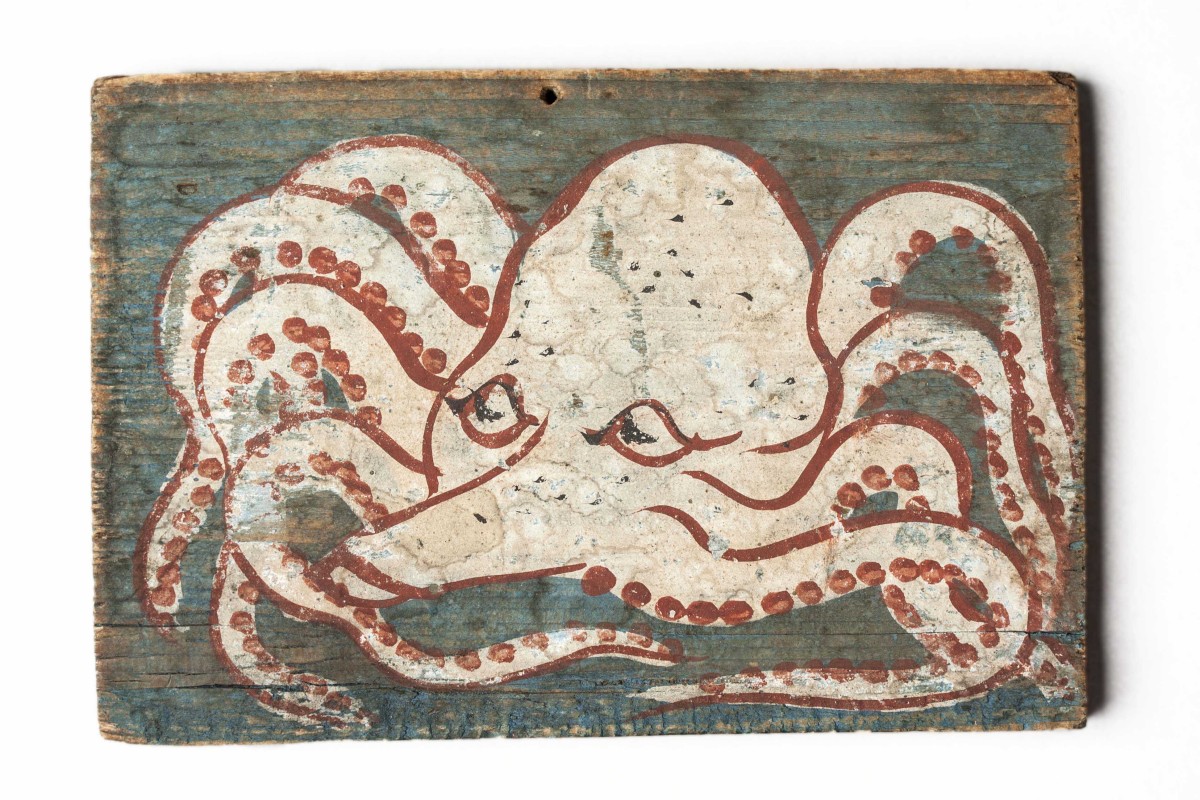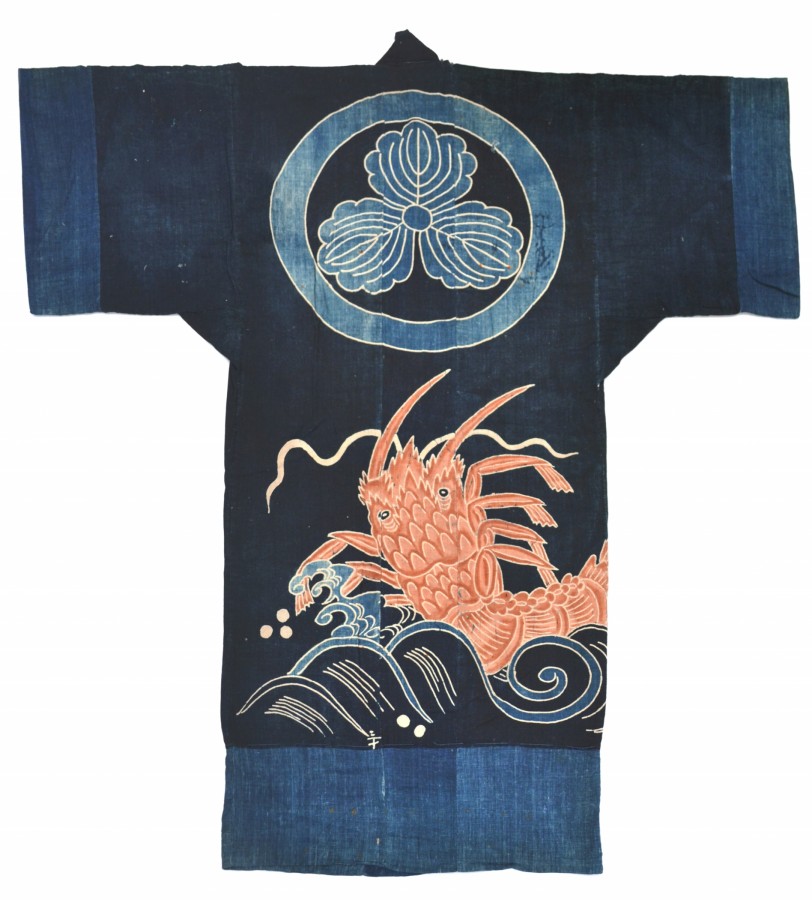Master potter Tatsuzō Shimaoka created the textured patterning on this stoneware tea bowl by impressing rope into the damp clay prior to firing the piece in the kiln.
Japanese art forms the core of the Museum’s mingei holdings, with more than 3,000 items.
